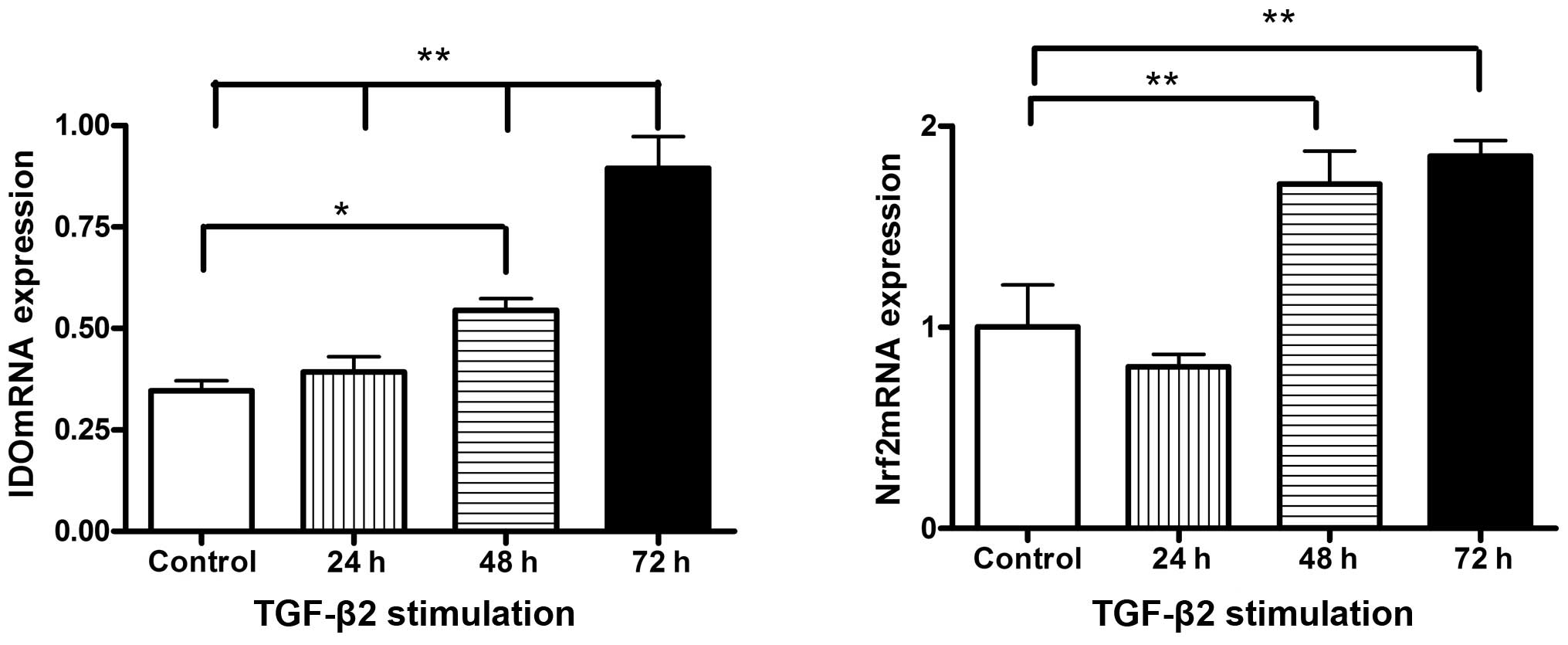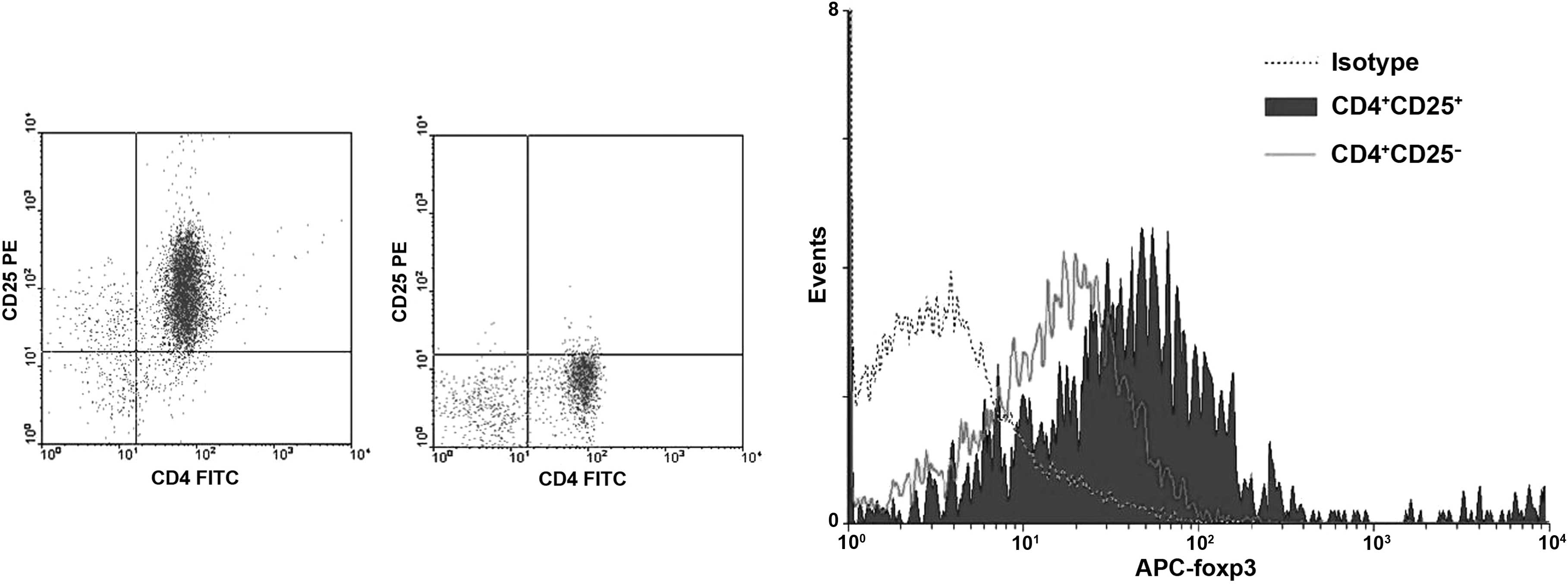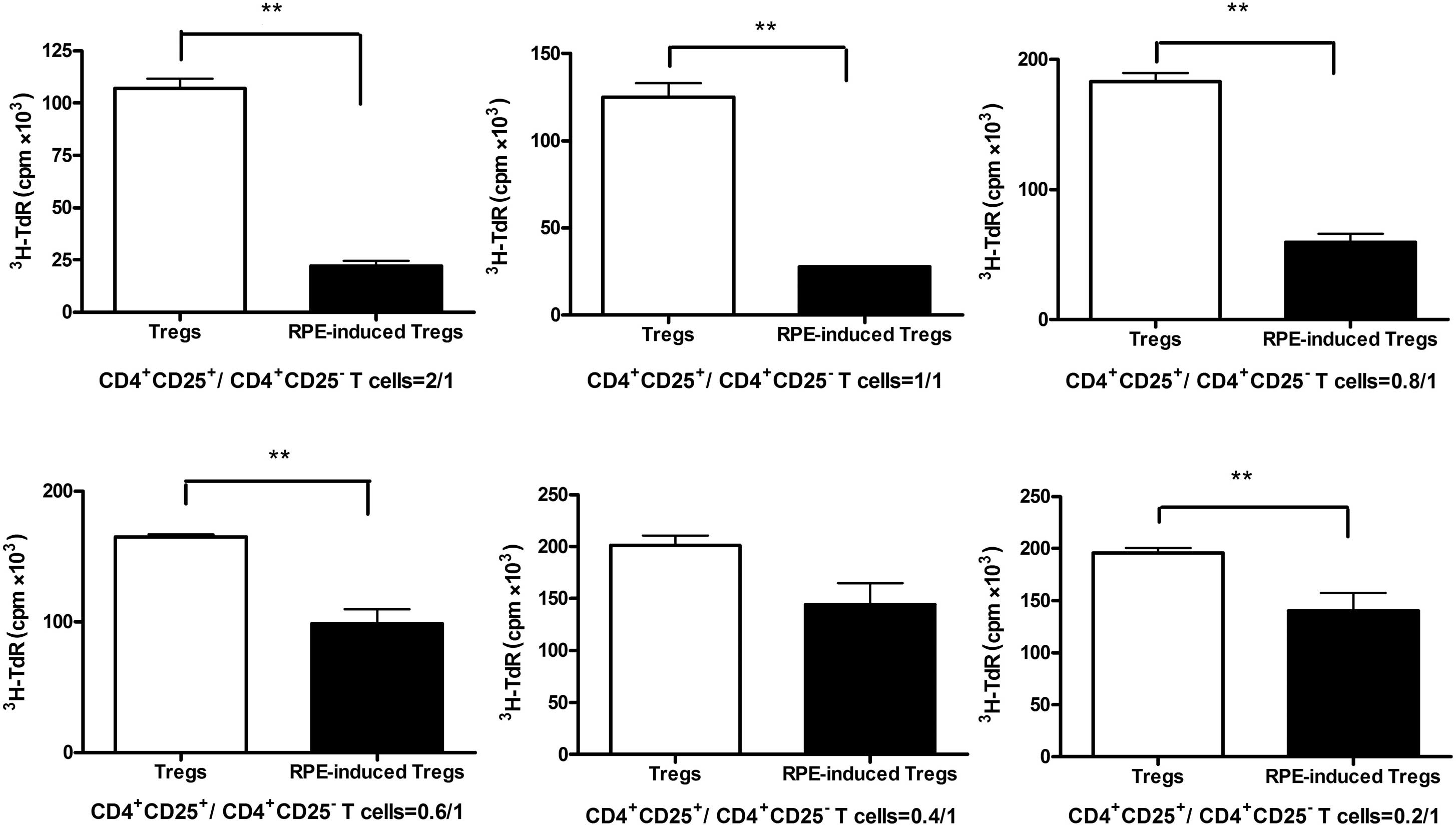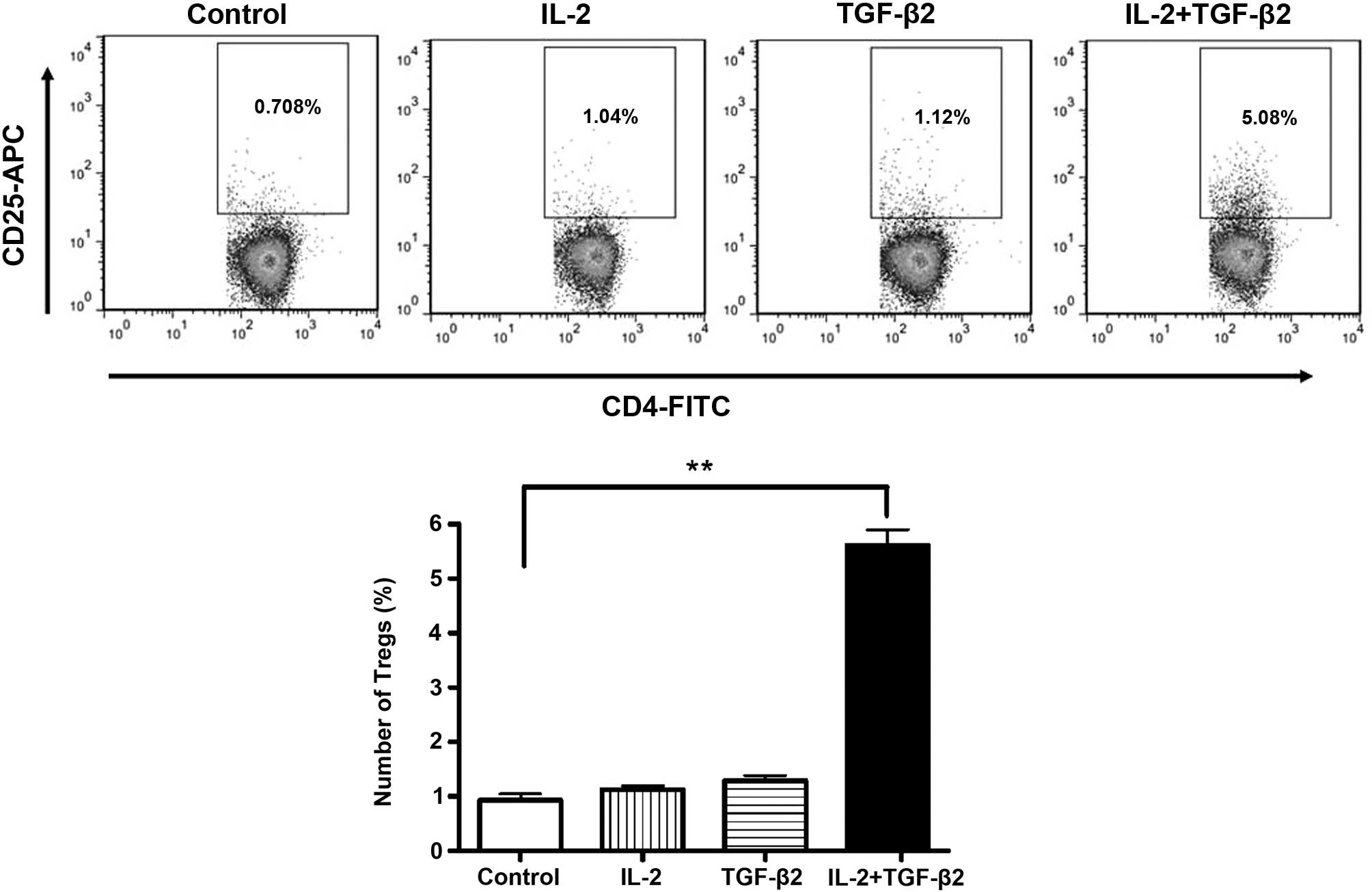|
1
|
Sugita S: Role of ocular pigment
epithelial cells in immune privilege. Arch Immunol Ther Exp
(Warsz). 57:263–268. 2009. View Article : Google Scholar
|
|
2
|
Imai A, Sugita S, Kawazoe Y, Horie S,
Yamada Y, Keino H, Maruyama K and Mochizuki M: Immunosuppressive
properties of regulatory T cells generated by incubation of
peripheral blood mononuclear cells with supernatants of human RPE
cells. Invest Ophthalmol Vis Sci. 53:7299–7309. 2012. View Article : Google Scholar : PubMed/NCBI
|
|
3
|
Detrick B and Hooks JJ: Immune regulation
in the retina. Immunol Res. 47:153–161. 2010. View Article : Google Scholar : PubMed/NCBI
|
|
4
|
Gregerson DS, Heuss ND, Lew KL, McPherson
SW and Ferrington DA: Interaction of retinal pigmented epithelial
cells and CD4 T cells leads to T-cell anergy. Invest Ophthalmol Vis
Sci. 48:4654–4663. 2007. View Article : Google Scholar : PubMed/NCBI
|
|
5
|
Sugita S, Horie S, Nakamura O, Futagami Y,
Takase H, Keino H, Aburatani H, Katunuma N, Ishidoh K, Yamamoto Y
and Mochizuki M: Retinal pigment epithelium-derived CTLA-2alpha
induces TGFbeta-producing T regulatory cells. J Immunol.
181:7525–7536. 2008. View Article : Google Scholar : PubMed/NCBI
|
|
6
|
Sakaguchi S, Sakaguchi N, Asano M, Itoh M
and Toda M: Immunologic self-tolerance maintained by activated T
cells expressing IL-2 receptor alpha-chains (CD25). Breakdown of a
single mechanism of self-tolerance causes various autoimmune
diseases. J Immunol. 155:1151–1164. 1995.PubMed/NCBI
|
|
7
|
Sakaguchi S: Naturally arising
Foxp3-expressing CD25+CD4+ regulatory T cells in immunological
tolerance to self and non-self. Nat Immunol. 6:345–352. 2005.
View Article : Google Scholar : PubMed/NCBI
|
|
8
|
Yamazaki S and Morita A: Dendritic cells
in the periphery control antigen-specific natural and induced
regulatory T cells. Front Immunol. 4:1512013. View Article : Google Scholar : PubMed/NCBI
|
|
9
|
Golshayan D, Jiang S, Tsang J, Garin MI,
Mottet C and Lechler RI: In vitro-expanded donor
alloantigen-specific CD4+CD25+ regulatory T cells promote
experimental transplantation tolerance. Blood. 109:827–835. 2007.
View Article : Google Scholar
|
|
10
|
Yamazaki S, Inaba K, Tarbell KV and
Steinman RM: Dendritic cells expand antigen-specific Foxp3+ CD25+
CD4+ regulatory T cells including suppressors of alloreactivity.
Immunol Rev. 212:314–329. 2006. View Article : Google Scholar : PubMed/NCBI
|
|
11
|
Singer-Sam J, Robinson MO, Bellvé AR,
Simon MI and Riggs AD: Measurement by quantitative PCR of changes
in HPRT, PGK-1, PGK-2, APRT, MTase and Zfy gene transcripts during
mouse spermatogenesis. Nucleic Acids Res. 18:1255–1259. 1990.
View Article : Google Scholar : PubMed/NCBI
|
|
12
|
Horie S, Sugita S, Futagami Y, Yamada Y
and Mochizuki M: Human retinal pigment epithelium-induced CD4+CD25+
regulatory T cells suppress activation of intraocular effector T
cells. Clin Immunol. 136:83–95. 2010. View Article : Google Scholar : PubMed/NCBI
|
|
13
|
Bodaghi B, Goureau O, Zipeto D, Laurent L,
Virelizier JL and Michelson S: Role of IFN-gamma-induced
indoleamine 2,3 dioxygenase and inducible nitric oxide synthase in
the replication of human cytomegalovirus in retinal pigment
epithelial cells. J Immunol. 162:957–964. 1999.PubMed/NCBI
|
|
14
|
Livak KJ and Schmittgen TD: Analysis of
relative gene expression data using real-time quantitative PCR and
the 2(-Delta Delta C(T)) Method. Methods. 25:402–408. 2001.
View Article : Google Scholar
|
|
15
|
Grohmann U, Fallarino F and Puccetti P:
Tolerance: DCs and tryptophan: Much ado about IDO. Trends Immunol.
24:242–248. 2003. View Article : Google Scholar : PubMed/NCBI
|
|
16
|
Chen W: IDO: More than an enzyme. Nat
Immunol. 12:809–811. 2011. View Article : Google Scholar : PubMed/NCBI
|
|
17
|
Harden JL and Egilmez NK: Indoleamine
2,3-dioxygenase and dendritic cell tolerogenicity. Immunol Invest.
41:738–764. 2012. View Article : Google Scholar : PubMed/NCBI
|
|
18
|
Pallotta MT, Orabona C, Volpi C, Vacca C,
Belladonna ML, Bianchi R, Servillo G, Brunacci C, Calvitti M,
Bicciato S, et al: Indoleamine 2,3-dioxygenase is a signaling
protein in long-term tolerance by dendritic cells. Nat Immunol.
12:870–878. 2011. View Article : Google Scholar : PubMed/NCBI
|
|
19
|
Cousins SW, McCabe MM, Danielpour D and
Streilein JW: Identification of transforming growth factor-beta as
an immunosuppressive factor in aqueous humor. Invest Ophthalmol Vis
Sci. 32:2201–2211. 1991.PubMed/NCBI
|
|
20
|
Park CY, Yang SH, Chuck RS, Gehlbach PL
and Park CG: The role of indoleamine 2,3-dioxygenase in retinal
pigment epithelial cell-mediated immune modulation. Ocul Immunol
Inflamm. 18:24–31. 2010. View Article : Google Scholar : PubMed/NCBI
|
|
21
|
Chan K, Han XD and Kan YW: An important
function of Nrf2 in combating oxidative stress: Detoxification of
acetaminophen. Proc Natl Acad Sci USA. 98:4611–4616. 2001.
View Article : Google Scholar : PubMed/NCBI
|
|
22
|
Wang X, Lu L and Jiang S: Regulatory T
cells: Customizing for the clinic. Sci Transl Med. 3:83ps192011.
View Article : Google Scholar : PubMed/NCBI
|
|
23
|
Okubo Y, Mera T, Wang L and Faustman DL:
Homogeneous expansion of human T-regulatory cells via tumor
necrosis factor receptor 2. Sci Rep. 3:31532013. View Article : Google Scholar : PubMed/NCBI
|
|
24
|
Hippen KL, Merkel SC, Schirm DK, Sieben
CM, Sumstad D, Kadidlo DM, McKenna DH, Bromberg JS, Levine BL,
Riley JL, et al: Massive ex vivo expansion of human natural
regulatory T cells [T(regs)] with minimal loss of in vivo
functional activity. Sci Transl Med. 3:83ra412011. View Article : Google Scholar
|
|
25
|
Karlsson F, Martinez NE, Gray L, Zhang S,
Tsunoda I and Grisham MB: Therapeutic evaluation of ex
vivo-generated versus natural regulatory T-cells in a mouse model
of chronic gut inflammation. Inflamm Bowel Dis. 19:2282–2294. 2013.
View Article : Google Scholar : PubMed/NCBI
|













